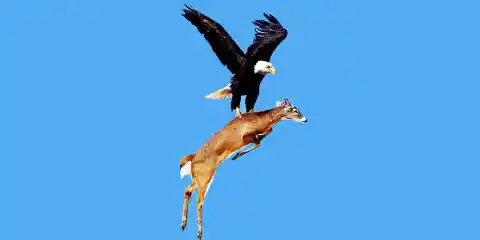

The eagle is a national symbol in America, and one of the most recognizable animals around the world. There is a wide variety of eagles, and they’re known for their size and predatory nature. But here are a few things you probably don’t know about them.
Number Fifteen: Not All Eagles are Carnivores. Most eagles around the world are meat-eaters, feeding on fish, rodents, and sometimes even primates. But the African Vulturine Fish-Eagle is actually a vegetarian and eats palm fruits for sustenance.
Number Fourteen: The Ancient Aztecs Saw Them as a Divine Sign. The Aztecs revered the bird. The respected them so much so that when one of them would land in a given spot, the Aztecs would decide on that location as a place to build on.
Number Thirteen: They Have Very Powerful Talons. Their talons are very large, intimidating and dangerous. But most people would not know that the strike of an eagle’s talon is actually more powerful than a rifle’s bullet.
Number Twelve: Bald Eagles Have Very Specific Migration Patterns. Bald Eagles migrate every year, before winter and summer. They choose the same exact spots in both places each year.
Number Eleven: They Have a Lot of Feathers. Obviously, with such long wings and large bodies, you would expect an eagle to come with plenty of feathers. But you might not guess that they have a total of 7,000.
Number Ten: The Female Eagle is Larger Than the Male. Like many creatures in nature, the female eagle is actually larger than the male. Because of this, the female will also do much of the hunting and nest-building that its superior strength requires of it.
Number Nine: The Golden Eagle Eats Turtles. In Greece, the Golden Eagle has made the turtle one of its primary sources of food. It will actually pick the turtle up, soar to a high altitude and then drop the turtle from a great height to that its shell will shatter.
Number Eight: Eagles Have Very Large Eyes. The unusually large eyes (for a bird, anyway) allow it to see from greater distances than some other birds. This helps it to spot prey from far away. Check back for part two of this fact list!